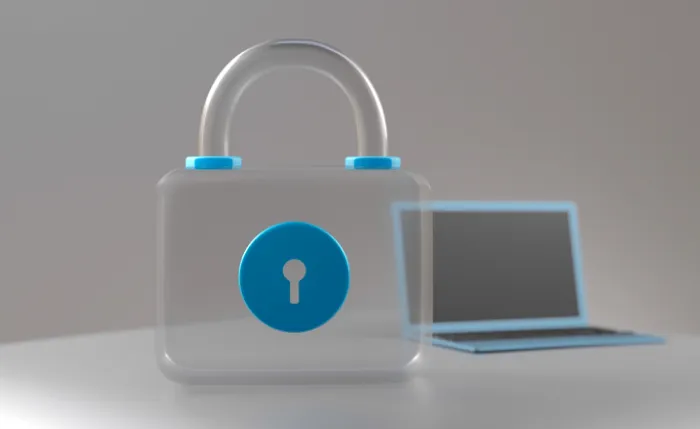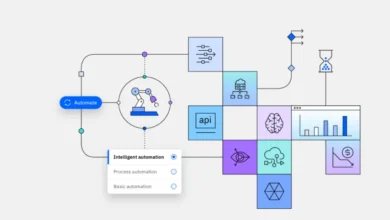How to Audit Your DApp – A Step-By-Step Guide

Decentralized applications (DApps) are increasingly favored due to their numerous benefits, such as transparency, security, and immutability. However, like any software, DApps may contain vulnerabilities that attackers can exploit, leading to the theft of user funds or private data. To ensure the security and functionality of your DApp, it’s essential to conduct a thorough audit before releasing it to the public. In this article, we will present a detailed step-by-step guide for auditing and securing your DApp.
Contents
- 1 Step 1. Specify Your Goals
- 1.1 How to Conduct a DApp Security Audit to Detect Smart Contract Code Vulnerabilities
- 1.2 Assessing the Security of Your DApp’s Architecture and Design
- 1.3 Evaluating the Effectiveness of Existing Security Measures in Place for Your DApp
- 1.4 Validating Compliance with Industry Standards and Best Practices
- 1.5 Providing Recommendations to Enhance DApp Security
- 2 Step 2: Choosing an Audit Team
- 3 Step 3: Audit the Smart Contracts
- 4 Step 4: Test the DApp
- 5 Step 5. Analyze Security Reports
- 6 Step 6. Completion of the Audit Report
Step 1. Specify Your Goals
The initial phase of conducting a thorough DApp security audit involves defining your objectives. It’s crucial to clearly outline the purpose of the audit and identify your primary security concerns specific to your DApp. Your goals should be clear, measurable, achievable, relevant, and time-bound. This approach ensures focus and attention to critical details throughout the audit process. For example, your goals may include:
How to Conduct a DApp Security Audit to Detect Smart Contract Code Vulnerabilities
Ensuring the security of smart contract code is a crucial aspect of DApp audit. The primary objective is to identify any potential vulnerabilities in the code that could lead to security breaches, financial losses, or damage to reputation. Throughout the audit process, the auditor meticulously analyzes the code to uncover weaknesses that malicious actors could exploit. Additionally, the auditor provides recommendations for mitigating or resolving any identified vulnerabilities.
Assessing the Security of Your DApp’s Architecture and Design
Another pivotal goal of DApp auditing is to evaluate the security of the DApp’s architecture and design. The auditor thoroughly examines the underlying architecture, data storage mechanisms, communication protocols, access control methods, and other security-related components to assess the overall security stance of the DApp. This ensures that the DApp is developed with security in mind and adheres to established industry standards.
Evaluating the Effectiveness of Existing Security Measures in Place for Your DApp
Assessing the effectiveness of the security measures already implemented is also a fundamental objective of DApp auditing. The auditor evaluates the encryption, access control, and authentication systems utilized by the DApp to determine their ability to withstand various types of cyber threats. If necessary, the auditor offers recommendations for enhancing these measures to bolster the DApp’s security posture.
Validating Compliance with Industry Standards and Best Practices
Confirming adherence to industry best practices and standards is another significant goal of DApp auditing. The auditor verifies whether the DApp follows secure development practices and aligns with recognized industry standards such as OWASP and NIST. This validation ensures that the DApp meets industry security requirements and inspires confidence among users.
Providing Recommendations to Enhance DApp Security
Ultimately, the aim of DApp auditing is to enhance the overall security of the DApp. Based on the findings of the audit, the auditor offers recommendations for strengthening the DApp’s security posture. These recommendations may include addressing identified flaws or vulnerabilities in the code or design, as well as proposing additional security measures to further fortify the DApp’s defenses against cyber threats.
Step 2: Choosing an Audit Team
Choosing the right audit team is crucial for conducting a thorough decentralized application (DApp) audit. The team should consist of specialists with expertise in blockchain technology, smart contract security, and DApp development.
Why is DApp development expertise important?
Expertise in DApp development is crucial due to the intricate nature of the process, which requires a deep understanding of underlying blockchain technology. The audit team must comprise experts familiar with the specific blockchain network on which your DApp operates, comprehending its functioning and interaction with your DApp.
Additionally, proficiency in the coding languages used to build your DApp is essential. For instance, if your DApp is built on the Ethereum network, the team should be adept in Solidity, the programming language for Ethereum smart contracts. This knowledge is vital for auditing the smart contracts powering your DApp.
Why is Smart Contract Security Experience Important?
Smart contracts, integral to every DApp, automate the execution of two-party agreements but are also susceptible to attacks. Security holes in smart contracts require scrutiny by an audit team well-versed in smart contract security to identify and address them.
Common security flaws like reentrancy attacks, integer overflows, and unauthorized access to contract variables need attention. The audit team should possess the capability to assess smart contracts thoroughly, utilizing both automated tools and manual review techniques to identify potential security vulnerabilities.
Why is Blockchain Technology Knowledge Important?
A comprehensive understanding of blockchain technology is vital for the audit team to comprehend cryptographic protocols, consensus mechanisms, and blockchain architecture. This knowledge enables the team to grasp how your DApp interacts with the blockchain network and devise strategies to enhance its security.
Selecting the Best Audit Team
To ensure the chosen audit team is qualified for a thorough audit, verifying references and prior work experience is essential. Consider their experience level and expertise in your specific industry.
Moreover, opting for a company with expertise in auditing DApps and smart contracts is crucial. Cyberscope possesses the necessary resources, with our team boasting prior experience in similar projects and enjoying a reputable standing within the blockchain community.
Step 3: Audit the Smart Contracts
Auditing smart contracts is imperative to detect and rectify potential security vulnerabilities. The auditing process involves scrutinizing the code to identify any weaknesses or flaws that malicious actors could exploit. This step is critical as flaws in smart contracts can be exploited by scammers, resulting in financial theft, data breaches, or disruptions to the DApp’s functionality.
During smart contract audits, developers should be vigilant for various common issues, including:
- Reentrancy Attacks
Reentrancy attacks occur when a hacker repeatedly enters and exits a smart contract, exploiting its weakness to gain access to and steal money or information. Developers should ensure that their smart contracts utilize proper locking mechanisms to prevent simultaneous access to critical functionalities and mitigate reentrancy attacks.
- Integer Overflows/Underflows
Integer overflows or underflows happen when an integer value exceeds its upper or lower bound, leading to unexpected behavior or security vulnerabilities. To mitigate these issues, developers should ensure that their smart contracts handle integer values accurately.
Unauthorized access to contract variables occurs when an attacker gains access to information they shouldn’t have, allowing them to retrieve contract variables without proper authorization. To prevent unauthorized access to sensitive data, developers should implement appropriate access control measures in their smart contracts.
Developers should employ a combination of automated technologies and manual evaluations to conduct a comprehensive audit of smart contracts. Automated tools like Mythril, Slither, and Oyente can assist in identifying potential vulnerabilities and security issues through static analysis of the smart contract code.
Step 4: Test the DApp
Testing is a crucial aspect of the DApp development process to ensure its functionality and proper handling of transactions. The following steps outline an effective approach to testing your DApp:
Utilize automated testing tools: Employ programs like Ganache and Truffle to simulate transactions and test for vulnerabilities. These tools help uncover issues early in development, saving time and resources.
Perform manual testing: While automated testing is valuable, it may not detect all potential problems such as user experience or security issues. Conduct manual testing in various scenarios, including high traffic or slow network speeds, to ensure the DApp’s resilience.
Verify each feature: Test each feature of the DApp, including smart contracts, APIs, and user interfaces, to ensure they operate as intended.
Conduct security testing: Evaluate the DApp’s security and search for vulnerabilities using tools like Mythril or Oyente, particularly focusing on smart contracts.
Record test results: Document all test findings, including any flaws or issues encountered. This documentation serves as a reference to track progress and ensure that all problems are addressed before launching the DApp.
Step 5. Analyze Security Reports
It’s essential to carefully review security reports from automated tools and the audit team to identify potential risks and vulnerabilities in the DApp. Prioritize the identified concerns based on their significance and potential impact on the DApp.
Close collaboration with the development team is crucial to address and retest the identified issues. Provide the development team with a detailed list of issues, their severity, and recommended fixes, tackling the most critical issues first.
Following secure coding practices and integrating security into the development process are vital for addressing identified issues. Conduct comprehensive testing of the DApp to ensure resolution of concerns and prevent the introduction of new vulnerabilities.
Maintain ongoing communication with the development team to swiftly and effectively resolve any issues. Keep stakeholders informed of the DApp’s security enhancements through regular progress updates.
Step 6. Completion of the Audit Report
Ensuring the audit report is comprehensive and well-organized is vital during Step 6 of the DApp auditing process. The report should clearly outline all findings, including identified issues or vulnerabilities, along with suggestions for enhancing the DApp’s functionality and security, prioritized based on severity.
Each issue in the report should be described in detail, including specific mitigation actions and their severity. Recommendations may involve adding new security features, upgrading existing ones, or modifying the DApp’s architecture. Clear instructions should be provided to implement each recommendation, ensuring the DApp’s trustworthiness and safety.
Additionally, the report should feature a seal of approval or a completion certificate, indicating that the DApp has undergone auditing and meets necessary standards. This helps instill confidence among users and stakeholders, serving as evidence of the DApp’s security and reliability, which can be beneficial for seeking external funding or partnerships.
Step 6 of the DApp auditing process plays a crucial role in ensuring the DApp’s security and reliability. Conducting a thorough audit and providing a detailed report with improvement suggestions can enhance the DApp’s dependability and security. Including a completion certificate or seal of approval helps build trust with users and stakeholders, demonstrating the DApp’s security and reliability.



